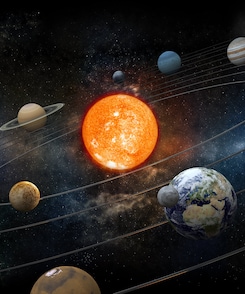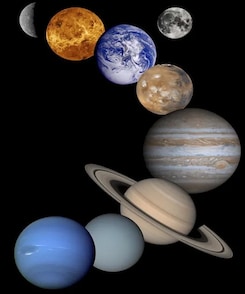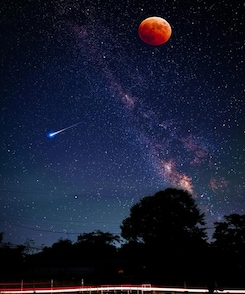Planet Earth
- All
- News
- Videos
- Web Stories
-

Why Venus Is the Brightest Morning Star Visible From Earth
- Thursday December 25, 2025
Venus appears so bright in the sky due to reflective sulfuric acid clouds, its closeness to Earth, and sunlight scattering that creates optical effects like a glory.
-
 www.gadgets360.com
www.gadgets360.com
-

Planet-Eating Stars Offer a Glimpse Into Earth’s Fate as the Sun Nears Its Final Stages
- Monday December 22, 2025
Astronomers studying aging Sun-like stars have found strong evidence that stars consume their closest planets as they evolve. Using data from NASA’s TESS mission, researchers observed fewer planets around older stars, suggesting worlds are destroyed over time. The findings offer a realistic preview of Earth’s fate billions of years from now.
-
 www.gadgets360.com
www.gadgets360.com
-

NASA Finds Thick Atmosphere On Rare Rocky Exoplanet
- Monday December 15, 2025
- Science |
Scientists are now analysing the entire data in depth to create a complete map of the temperature around the planet and better understand the composition of its atmosphere.
-
 www.ndtv.com
www.ndtv.com
-

Early Earth’s Deep Mantle May Have Held More Water Than Previously Believed, Study Finds
- Sunday December 14, 2025
Scientists have discovered that Earth’s deep mantle may have stored an ocean’s worth of water during the planet’s earliest years. New experiments show that bridgmanite, a dominant mantle mineral, can hold much more water under extreme heat, offering fresh insight into how Earth retained water and became habitable.
-
 www.gadgets360.com
www.gadgets360.com
-

TRAPPIST-1e Methane Signal Likely False, Webb Data Suggests Airless Planet
- Thursday December 11, 2025
The TRAPPIST-1 planetary system, located about 39 light-years from Earth, hosts seven rocky worlds orbiting a cool red dwarf star. While several of these Earth-sized planets lie in the star’s habitable zone, new observations from the James Webb Space Telescope suggest their atmospheres may be too thin to support life. Earlier hints of methane aro...
-
 www.gadgets360.com
www.gadgets360.com
-

A Nearby Planet May Have Formed the Moon Following a Collision With Early Earth: Study
- Wednesday December 3, 2025
A new analysis of Apollo samples and Earth rocks suggests that a nearby rocky planet, not a distant object, collided with early Earth and formed the moon. The study argues that this lost planet, Theia, originated in the inner solar system and shared Earth’s early neighbourhood, offering fresh insight into one of the most important events in our p...
-
 www.gadgets360.com
www.gadgets360.com
-

NASA's Astronomers Reveal Red Giant Stars May Destroy Their Own Planets
- Monday November 10, 2025
- Science |
This extreme expansion poses a serious threat to nearby planets. For example, when the Sun becomes a red giant in about 5 billion years, it will likely swallow Mercury and Venus.
-
 www.ndtv.com
www.ndtv.com
-

ESCAPADE Mission: NASA To Send Twin Orbiters To Decode Mars' Magnetic Mysteries
- Wednesday November 5, 2025
- Science |
The mission is scheduled to launch on November 9, aboard Blue Origin's New Glenn rocket from Cape Canaveral Space Force Station in Florida.
-
 www.ndtv.com
www.ndtv.com
-

Scientists Stunned as Earth’s Magnetosphere Shows Reversed Electric Charge Patterns
- Sunday November 2, 2025
Scientists have discovered that Earth’s morning-side magnetosphere is negatively charged, overturning decades of assumptions about space electricity. Satellite data and simulations show the charge pattern flips near the equator but remains traditional at the poles. The breakthrough reshapes understanding of space weather and may also clarify elec...
-
 www.gadgets360.com
www.gadgets360.com
-

Astronomers Stunned By Three Earth-Sized Planets In Distant Unique Planetary System
- Wednesday October 29, 2025
- Science |
The study revealed that TOI-2267 has two closely bound stars orbiting each other, and the third planet transits the companion star.
-
 www.ndtv.com
www.ndtv.com
-

Why Venus Is the Brightest Morning Star Visible From Earth
- Thursday December 25, 2025
Venus appears so bright in the sky due to reflective sulfuric acid clouds, its closeness to Earth, and sunlight scattering that creates optical effects like a glory.
-
 www.gadgets360.com
www.gadgets360.com
-

Planet-Eating Stars Offer a Glimpse Into Earth’s Fate as the Sun Nears Its Final Stages
- Monday December 22, 2025
Astronomers studying aging Sun-like stars have found strong evidence that stars consume their closest planets as they evolve. Using data from NASA’s TESS mission, researchers observed fewer planets around older stars, suggesting worlds are destroyed over time. The findings offer a realistic preview of Earth’s fate billions of years from now.
-
 www.gadgets360.com
www.gadgets360.com
-

NASA Finds Thick Atmosphere On Rare Rocky Exoplanet
- Monday December 15, 2025
- Science |
Scientists are now analysing the entire data in depth to create a complete map of the temperature around the planet and better understand the composition of its atmosphere.
-
 www.ndtv.com
www.ndtv.com
-

Early Earth’s Deep Mantle May Have Held More Water Than Previously Believed, Study Finds
- Sunday December 14, 2025
Scientists have discovered that Earth’s deep mantle may have stored an ocean’s worth of water during the planet’s earliest years. New experiments show that bridgmanite, a dominant mantle mineral, can hold much more water under extreme heat, offering fresh insight into how Earth retained water and became habitable.
-
 www.gadgets360.com
www.gadgets360.com
-

TRAPPIST-1e Methane Signal Likely False, Webb Data Suggests Airless Planet
- Thursday December 11, 2025
The TRAPPIST-1 planetary system, located about 39 light-years from Earth, hosts seven rocky worlds orbiting a cool red dwarf star. While several of these Earth-sized planets lie in the star’s habitable zone, new observations from the James Webb Space Telescope suggest their atmospheres may be too thin to support life. Earlier hints of methane aro...
-
 www.gadgets360.com
www.gadgets360.com
-

A Nearby Planet May Have Formed the Moon Following a Collision With Early Earth: Study
- Wednesday December 3, 2025
A new analysis of Apollo samples and Earth rocks suggests that a nearby rocky planet, not a distant object, collided with early Earth and formed the moon. The study argues that this lost planet, Theia, originated in the inner solar system and shared Earth’s early neighbourhood, offering fresh insight into one of the most important events in our p...
-
 www.gadgets360.com
www.gadgets360.com
-

NASA's Astronomers Reveal Red Giant Stars May Destroy Their Own Planets
- Monday November 10, 2025
- Science |
This extreme expansion poses a serious threat to nearby planets. For example, when the Sun becomes a red giant in about 5 billion years, it will likely swallow Mercury and Venus.
-
 www.ndtv.com
www.ndtv.com
-

ESCAPADE Mission: NASA To Send Twin Orbiters To Decode Mars' Magnetic Mysteries
- Wednesday November 5, 2025
- Science |
The mission is scheduled to launch on November 9, aboard Blue Origin's New Glenn rocket from Cape Canaveral Space Force Station in Florida.
-
 www.ndtv.com
www.ndtv.com
-

Scientists Stunned as Earth’s Magnetosphere Shows Reversed Electric Charge Patterns
- Sunday November 2, 2025
Scientists have discovered that Earth’s morning-side magnetosphere is negatively charged, overturning decades of assumptions about space electricity. Satellite data and simulations show the charge pattern flips near the equator but remains traditional at the poles. The breakthrough reshapes understanding of space weather and may also clarify elec...
-
 www.gadgets360.com
www.gadgets360.com
-

Astronomers Stunned By Three Earth-Sized Planets In Distant Unique Planetary System
- Wednesday October 29, 2025
- Science |
The study revealed that TOI-2267 has two closely bound stars orbiting each other, and the third planet transits the companion star.
-
 www.ndtv.com
www.ndtv.com














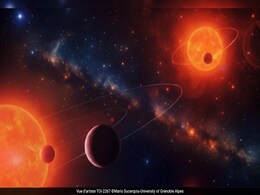
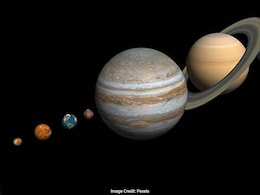





![Gadgets 360 With Technical Guruji: Did You Know? [August 31, 2024] Gadgets 360 With Technical Guruji: Did You Know? [August 31, 2024]](https://c.ndtvimg.com/2024-08/fgcn5358_did-you-know_640x480_31_August_24.jpg?downsize=245:163)


![Gadgets 360 With Technical Guruji: Did You Know? [March 30, 2024] Gadgets 360 With Technical Guruji: Did You Know? [March 30, 2024]](https://c.ndtvimg.com/2024-01/5oeiv1lo_did-you-know_640x480_20_January_24.jpg?downsize=245:163)







